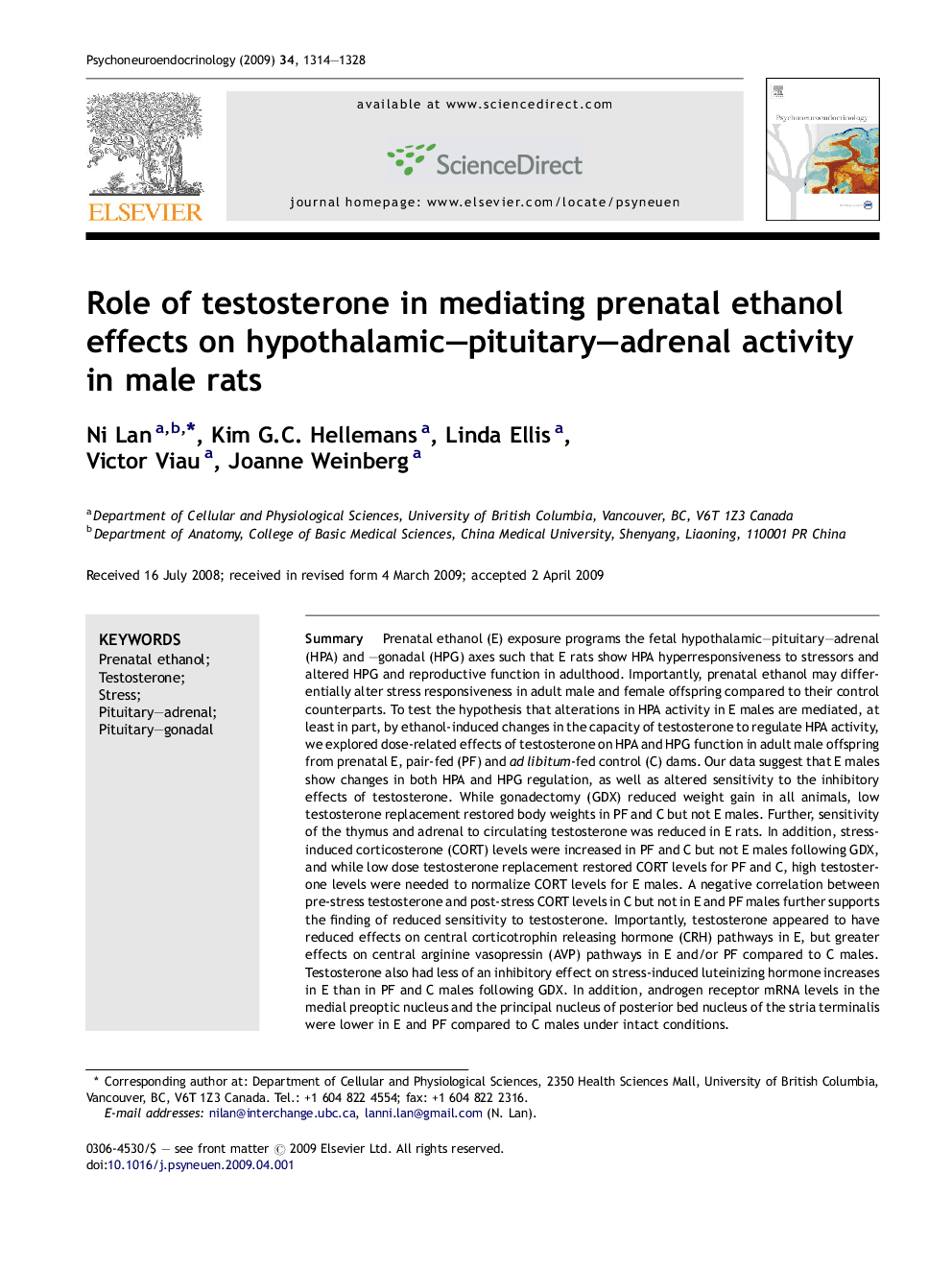| کد مقاله | کد نشریه | سال انتشار | مقاله انگلیسی | نسخه تمام متن |
|---|---|---|---|---|
| 336718 | 547194 | 2009 | 15 صفحه PDF | دانلود رایگان |

SummaryPrenatal ethanol (E) exposure programs the fetal hypothalamic–pituitary–adrenal (HPA) and –gonadal (HPG) axes such that E rats show HPA hyperresponsiveness to stressors and altered HPG and reproductive function in adulthood. Importantly, prenatal ethanol may differentially alter stress responsiveness in adult male and female offspring compared to their control counterparts. To test the hypothesis that alterations in HPA activity in E males are mediated, at least in part, by ethanol-induced changes in the capacity of testosterone to regulate HPA activity, we explored dose-related effects of testosterone on HPA and HPG function in adult male offspring from prenatal E, pair-fed (PF) and ad libitum-fed control (C) dams. Our data suggest that E males show changes in both HPA and HPG regulation, as well as altered sensitivity to the inhibitory effects of testosterone. While gonadectomy (GDX) reduced weight gain in all animals, low testosterone replacement restored body weights in PF and C but not E males. Further, sensitivity of the thymus and adrenal to circulating testosterone was reduced in E rats. In addition, stress-induced corticosterone (CORT) levels were increased in PF and C but not E males following GDX, and while low dose testosterone replacement restored CORT levels for PF and C, high testosterone levels were needed to normalize CORT levels for E males. A negative correlation between pre-stress testosterone and post-stress CORT levels in C but not in E and PF males further supports the finding of reduced sensitivity to testosterone. Importantly, testosterone appeared to have reduced effects on central corticotrophin releasing hormone (CRH) pathways in E, but greater effects on central arginine vasopressin (AVP) pathways in E and/or PF compared to C males. Testosterone also had less of an inhibitory effect on stress-induced luteinizing hormone increases in E than in PF and C males following GDX. In addition, androgen receptor mRNA levels in the medial preoptic nucleus and the principal nucleus of posterior bed nucleus of the stria terminalis were lower in E and PF compared to C males under intact conditions.Together, these data support our previous work suggesting altered sensitivity to testosterone in E males. Furthermore, differential effects of testosterone on the complex balance between central CRH and central AVP pathways may play a role in the HPA alterations observed. That some findings were similar in E and PF males suggest that nutritional effects of diet may have played a role in mediating at least some of the changes seen in E animals.
Journal: Psychoneuroendocrinology - Volume 34, Issue 9, October 2009, Pages 1314–1328